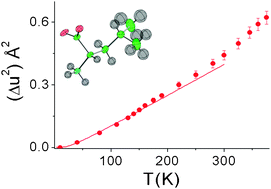Structure–property relations in crystalline l-leucine obtained from calorimetry, X-rays, neutron and Raman scattering
Abstract
We have studied the

Maintenance work is planned for Wednesday 1st May 2024 from 9:00am to 11:00am (BST).
During this time, the performance of our website may be affected - searches may run slowly and some pages may be temporarily unavailable. If this happens, please try refreshing your web browser or try waiting two to three minutes before trying again.
We apologise for any inconvenience this might cause and thank you for your patience.
* Corresponding authors
a Universidade Federal do Maranhão, CCSST, Imperatriz 65900-410, Brazil
b China Institute of Atomic Energy, Beijing, P.R. China
c
Helmholtz-Zentrum Berlin für Materialien und Energie GmbH, Hahn-Meitner-Platz, 1, Berlin 14109, Germany
E-mail:
bordallo@helmholtz-berlin.de
Fax: +49 30 8062 2308
Tel: +49 30 8062 2924
d Universidade Federal do Ceará, Departamento de Física, C.P. 6030, Fortaleza 60455-760, Brazil
e Laboratório Nacional de Luz Síncrotron (LNLS), P.O. Box 6192, Campinas 13084-971, São Paulo, Brazil
We have studied the

 Please wait while we load your content...
Something went wrong. Try again?
Please wait while we load your content...
Something went wrong. Try again?
P. F. Façanha Filho, X. Jiao, P. T. C. Freire, J. A. Lima Jr., A. O. dos Santos, P. F. Henry, F. Yokaichiya, E. Kremner and H. N. Bordallo, Phys. Chem. Chem. Phys., 2011, 13, 6576 DOI: 10.1039/C0CP02278K
To request permission to reproduce material from this article, please go to the Copyright Clearance Center request page.
If you are an author contributing to an RSC publication, you do not need to request permission provided correct acknowledgement is given.
If you are the author of this article, you do not need to request permission to reproduce figures and diagrams provided correct acknowledgement is given. If you want to reproduce the whole article in a third-party publication (excluding your thesis/dissertation for which permission is not required) please go to the Copyright Clearance Center request page.
Read more about how to correctly acknowledge RSC content.
 Fetching data from CrossRef.
Fetching data from CrossRef.
This may take some time to load.
Loading related content
